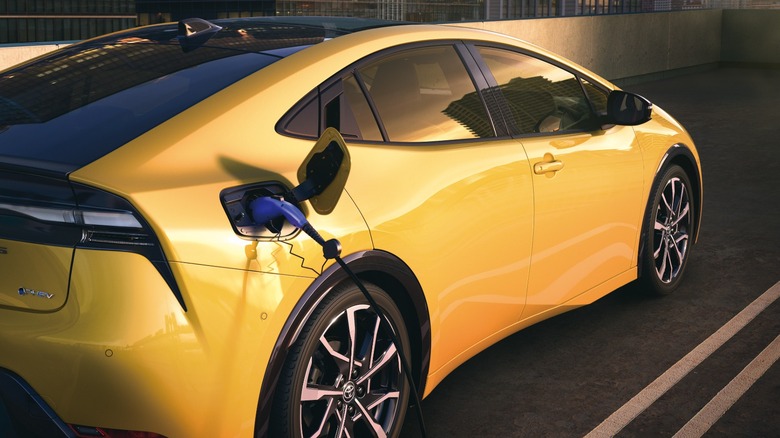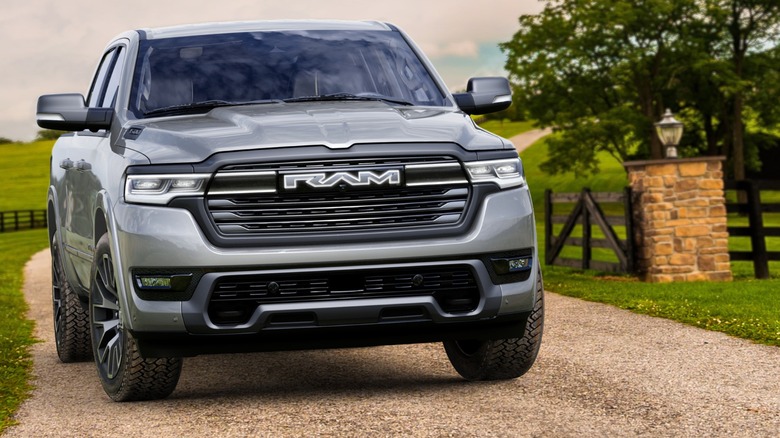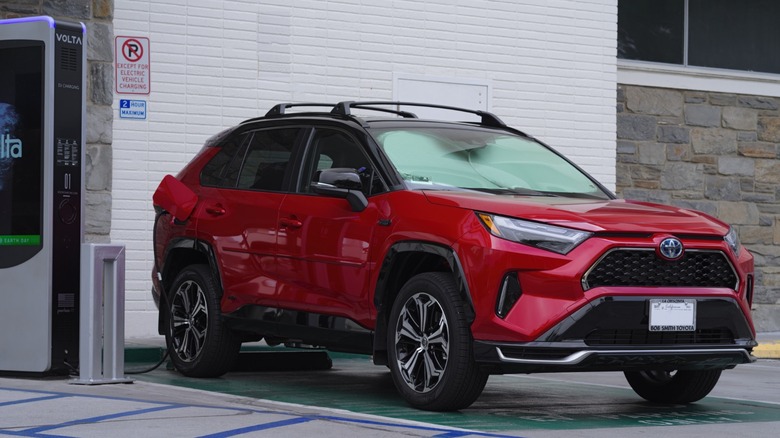What Does PHEV Mean? And How Is It Different From A Hybrid?
If you're looking for an electrified car but not yet ready to go full electric, your next best option is to get a hybrid car. But if you've been looking at your options, you'll find dealers advertising hybrid and PHEV vehicles and you might be confused what makes these types of hybrids different. For example, Toyota offers the Toyota Prius (which is a hybrid car) and the Toyota Prius PHEV.
The main difference between these two models is that one is a traditional hybrid while the other is a Plug-in Hybrid Electric Vehicle (hence the PHEV in its name). Both vehicles are quite similar to each other in that they both have an internal combustion engine and an electric motor, except that you can charge the PHEV from one of the three levels of EV chargers to get juice onboard.
Despite that, a PHEV still has a gasoline engine that can recharge the battery (or even run the vehicle), thus giving you the best of both worlds. So, even if you forget to charge overnight, or if you're running low on battery power on a particular long drive, you don't have to worry about finding a charging station to get enough juice to get to your destination.
How is a PHEV different from a hybrid?
Since you can charge plug-in hybrid electric vehicles using an outlet, car makers typically give these cars a much larger battery versus other hybrid cars. That means new PHEVs usually have an all-electric range of 15 to 60 miles, which should be enough for your typical daily drive or errands within the city. Because of its larger battery capacity, PHEVs often have a better fuel economy, delivering higher MPGs compared to their hybrid counterparts.
Most PHEVs prioritize using the electric motor and will only turn on the gasoline engine to drive the wheels when its battery is running low or if it needs extra horses during hard acceleration. On the other hand, some PHEVs, like the Ram 1500 Ramcharger, uses a series hybrid design (also called range extender). This means that its engine isn't directly connected to an axle and can't drive the car. Instead, the internal combustion engine is used to recharge the battery and/or deliver electricity to the motor. Even though it's technically an EV and that it only uses its gasoline engine as a generator to extend its range, it's still considered as a plug-in hybrid EV.
But the biggest giveaway a car is a PHEV is if it has two fuel flaps — one for gasoline and another for electricity. You would easily see this when you physically look at the car in the dealership, and you could even ask the sales representative to open them to see for yourself. If you haven't had the chance to visit the car on the showroom floor yet, you can also look for it on the Department of Energy's Fuel Economy website. If it's a PHEV, you will see two entries in its MPG rating — gas & electric and regular gas.
What are the disadvantages of a PHEV?
The biggest disadvantage of getting a PHEV over other hybrid cars is the cost. Since this hybrid type often has larger batteries over other hybrids, it's often far more expensive to purchase. For example, if you look at Toyota's RAV4 lineup, you'll see the Toyota RAV4 Hybrid, which starts a $31,900, and the Toyota RAV4 Prime, which is a PHEV and starts at $43,865. That $12,000 difference might be too much for buyers, which is likely the reason why you'll see fewer PHEVs versus hybrid (and even electric) cars.
Another key issue with a PHEV is that you need to plug it into a charging station, and you can't just rely on its gasoline engine for recharging. If you treat a PHEV like a hybrid car and rarely (or even never) visit an outlet, then you might get a worse mileage versus a standard hybrid car. That's because you'll just end up carrying a heavy battery all that time that you don't fully use. So, if you don't have a charging station at home or live in an area where there aren't convenient and accessible places to plug your car in, you might be better off picking a regular hybrid vehicle.


